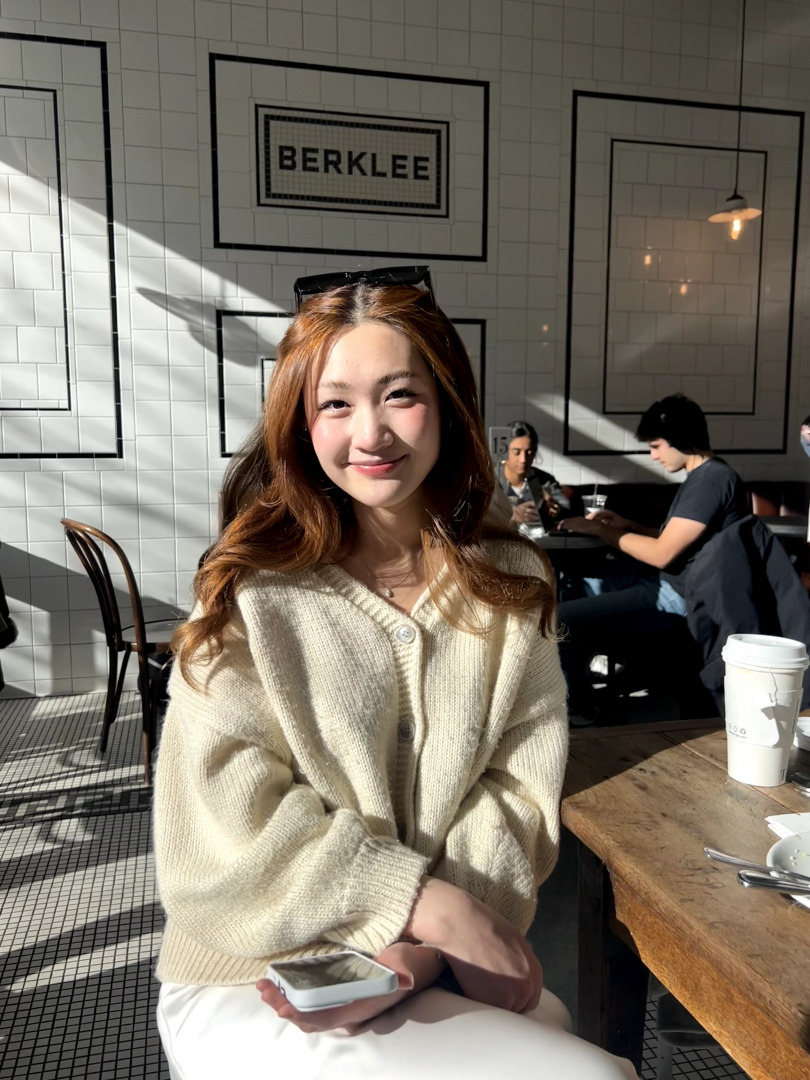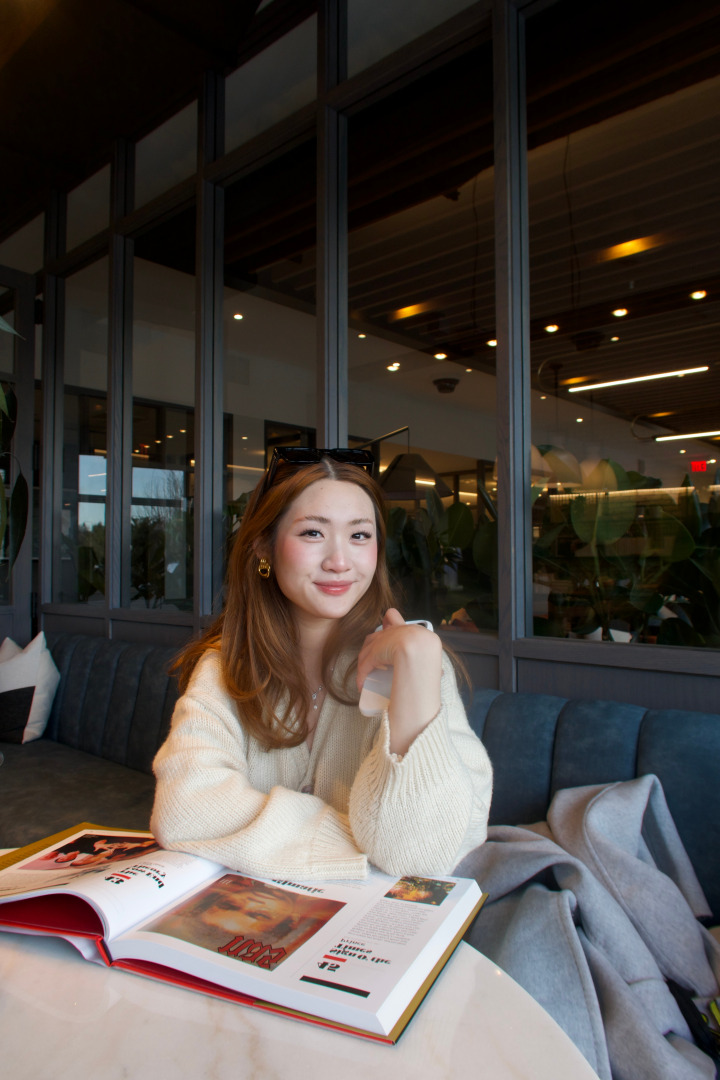Meet Gabriella Lin | Singer-songwriter
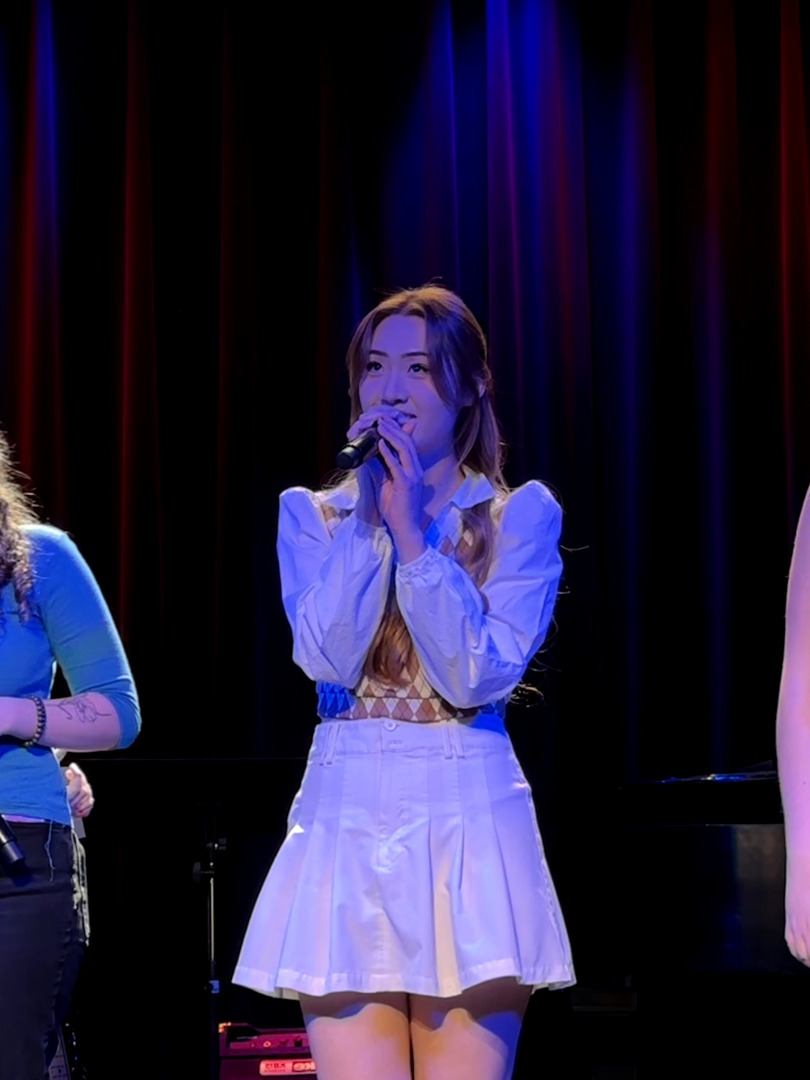

We had the good fortune of connecting with Gabriella Lin and we’ve shared our conversation below.
Hi Gabriella, other than deciding to work for yourself, what was the single most important decision you made that contributed to your success?
During my first two years at Berklee College of Music, I struggled significantly with releasing music. Although I wrote many songs, I never reached out to anyone to co-produced, mixed, or mastered any to the point of public release. I came to Berklee with the goal of improving my songwriting skills—but more importantly, to have people listen to my music. However, I was held back by an all-or-nothing mindset and perfectionism: if a song wasn’t absolutely perfect, I didn’t want to release it. I believed that if my music was going to be out there, it had to be flawless.
Over time, I realized this mindset was unrealistic. The longer I waited to release music, the further away I was from actually building an audience or getting any attention. I was not moving forward. It became clear that progress mattered more than being perfect.
Once I shifted away from the all-or-nothing thinking and committed to consistent releases—even if the songs weren’t “perfect”—I started seeing real progress. My music began to get streamed regularly on Spotify, and my listener base grew significantly over time. This change not only impacted my music career but also my social media presence. In the past, I would overanalyze every piece of content: questioning whether it was good enough, worrying about posting too much, or hesitating to share a video if it wasn’t meeting 100% of my standards. I held myself to impossible standards, often choosing not to post at all.
Ironically, one of my biggest social media breakthroughs came from a video I almost didn’t post because I felt it was only 60-70% good. That clip went viral and introduced my music to thousands of new listeners. This experience taught me that my excessive self-criticism often did not reflect how others perceived my work. Imperfection didn’t prevent me from connecting with people—what mattered the most was consistency and authenticity.
Overcoming the all-or-nothing mindset and perfectionism has been transformative. It’s taught me to embrace progress over perfection, to take risks, and to trust that sharing imperfect work is still valuable. This lesson now guides both my creative process and my professional approach, reminding me that growth comes through action, not waiting for flawless conditions.
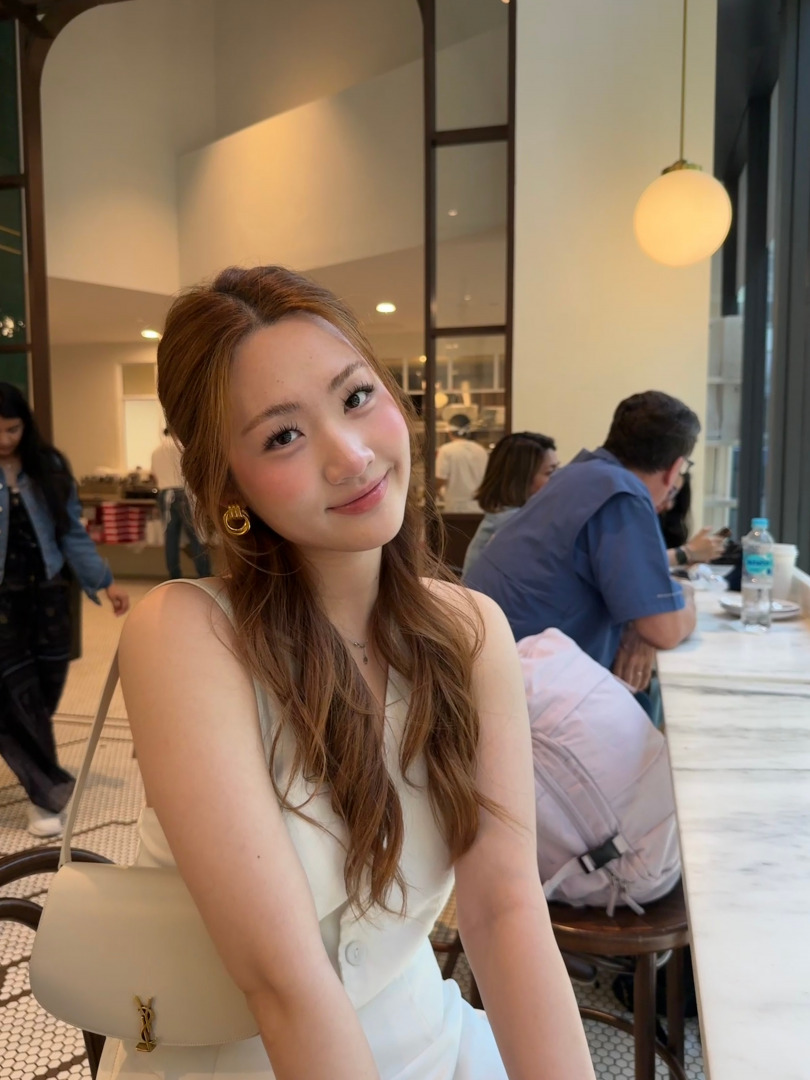
Alright, so let’s move onto what keeps you busy professionally?
What sets me apart as an artist is the wide range of musical influences that shaped me growing up. I was first introduced to music through the powerful world of film and television soundtracks, which gave me a deep appreciation for how music conveys emotion, color, and story. That early exposure helped me build a natural sensitivity to musical storytelling.
I then fell in love with musicals. Watching a great number of musicals in the theatres and performing, participating in some both taught me how to tell stories through song, both in writing and performance. That storytelling instinct has become a core part of my identity as an artist.
My cultural background has also played a huge role in defining my voice. Growing up in China, I was surrounded by emotionally rich music that often carries a deeper sense of lyrical and melodic complexity. In Eastern culture, there’s a particular respect and preference for the craft of composition, and that standard shaped the way I approach songwriting—always with care, always with intention.
A significant turning point in my journey came when I moved to New Zealand later for school, then the United States to attend Berklee College of Music. There, I was introduced to the more Westernized side of the music industry. I was exposed to new genres, new perspectives, and an entirely different cultural rhythm. This transition not only expanded my musical vocabulary but also taught me the value of balance—how to honor the deep-rooted emotionality of Eastern music while embracing the innovation, freedom, and diversity of Western styles. Living between these two worlds turned me into an artist who bridges cultures, someone who doesn’t just appreciate both, but seeks to integrate them meaningfully in my work.
I was also incredibly lucky to grow up in a musically nurturing home. My mother, a vocal coach and music educator, was my first teacher and greatest influence. She introduced me to classical music, symphonies, operas, and concertos. We’d sit together for hours, listening and analyzing everything from phrasing to instrumentation. With her guidance, I was also trained to play the piano, flute, and bassoon—each of which continues to influence how I write and perform music today.
But the journey hasn’t always been easy. Choosing to pursue music professionally came with constant doubt—both from within and from those around me. There were moments of overwhelming uncertainty, and times when I had to be the only person who truly believed in myself. Over time, I’ve learned to become my own source of confidence and stability. That resilience has shaped not just my career, but who I am as a person.
If there’s one lesson I’ve learned that I hope others can take with them, it’s this: Always do it for your future self. Don’t mold yourself into what others expect you to be in the moment.
Ultimately, my music is a reflection of everything I’ve lived—my culture, my upbringing, my struggles, and my growth. Through it, I hope to share stories that feel honest and human, and to build a space where emotion, imagination, and identity can all coexist.
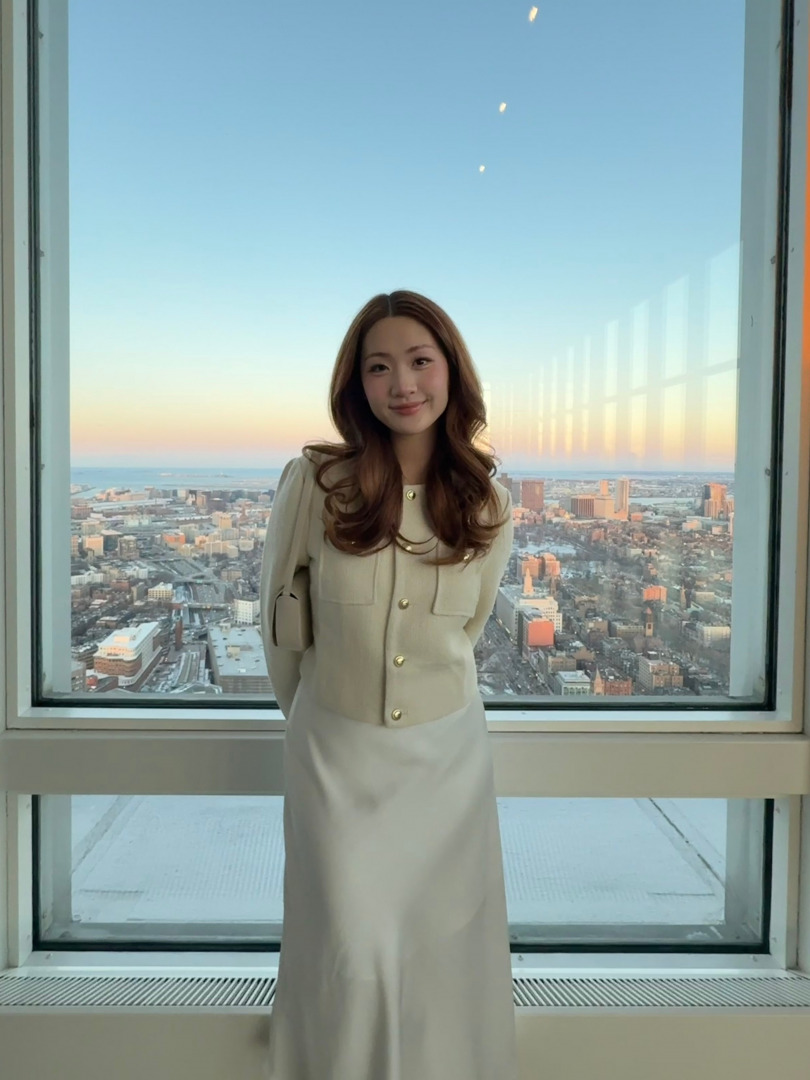
If you had a friend visiting you, what are some of the local spots you’d want to take them around to?
If my best friend were visiting Boston, I’d want to give her a full experience that captures both the city’s classic charm and the personal memories that make it special to me.
We would probably start by exploring some of the neighborhoods that truly define Boston’s character—Beacon Hill, North End, South End, and Back Bay. I’m always in awe of the architecture in these areas. The narrow cobblestone streets, brick buildings, wrought iron balconies, and gas-lit lamps give the city such a unique historical European feel, but with a distinctly American identity. It’s like stepping into a storybook version of Boston.
I’d definitely take her on a little personal tour of my own world here. I’d show her around Berklee, where I spend most of my time for classes and music. Then we’d walk through the first neighborhood I lived in when I moved here—revisit the streets where I used to grab coffee, writing down ideas for lyrics on the go, or just wander and think. It would be such a special moment to share those parts of my life with someone close to me, maybe even recreate a few old memories.
After exploring the historical side of Boston, I’d take her to see the modern part of Boston—the Seaport District. It’s one of my favorite areas to explore. I would love to take a long walk along the waterfront, maybe during golden hour when the light hits the water just right. There are so many cute little restaurants and cafés there, perfect for grabbing dinner or just sitting with a drink and watching the city move.
Throughout the week, I’d try to balance the classic with the personal. We’d eat our way through the North End’s Italian bakeries and pasta spots, stroll through the Boston Public Garden, pop into small music venues around Allston or Cambridge, and maybe even catch a jazz night or open mic. Boston has this quiet kind of magic—not in flashy attractions, but in its hidden corners and how the city feels when you slow down enough to really notice it.
More than anything, I’d want her to leave feeling like she didn’t just visit Boston—she got to see and feel the version of the city that helped shape me.

Who else deserves some credit and recognition?
Pride and Prejudice/Little Women
I want to dedicate my shoutout to two timeless books that have shaped the way I see women’s independence and self-worth: Pride and Prejudice by Jane Austen and Little Women by Louisa May Alcott. Though written centuries ago, both novels have been constant reminders to me that women’s voices and choices matter — no matter the era.
Elizabeth Bennet from Pride and Prejudice taught me the importance of self-respect and the courage to stand by your principles, how to stay true to myself, even when societal expectations push otherwise. She refuses to marry for convenience or wealth, choosing instead to value love and respect over social pressure — a lesson that continues to guide me as I face expectations and pressure in my own life today.
Similarly, Jo March from Little Women has always been an icon of ambition for me. Her refusal to give in to the traditional roles set for women, her passion for writing, and her insistence on building her own path showed me that independence isn’t just for men — it’s something we as women can also claim, even when the world doesn’t make it easy.
Both books, in their own ways, engraved a belief on me that women can and should define their own lives, free from the boxes we’re expected to fit into. They’ve been a quiet but powerful source of encouragement whenever I’ve needed to remind myself to make decisions that align with who I truly am.
Instagram: https://www.instagram.com/_gabriellalin/
Linkedin: https://www.linkedin.com/feed/
Youtube: https://www.youtube.com/@gabriellalinnn/videos

